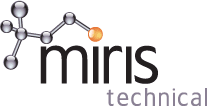Case Study #1
Client Requirement
The client was undertaking a due diligence and technology transfer assessment of a new technology that they planned to purchase.
The Challenge
The vendor company produced a comprehensive Front Engineering Optioneering Study using design simulation software to undertaken the design. Fundamental questions were raised during the due diligence phase regarding the operability and underlying safety case for the process that needed to be addressed before the client could consider purchasing the technology. Many of the reagents used were extremely hazardous to handle.
The client wished to use different Unit Operations in their design, so it was important to determine how the safety case for this revised Design Basis.
The client had no expertise in the particular simulation-software available at that time.
The Basis of Design was to link in to a large donor plant for supply of the key reagents.
The Project
By successfully integrating into the client’s team, Miris Technical Limited, were able to accurately replicate the vendor’s design and rigorously test the Design Basis and the Safety Case, using the client’s a theoretical feedstock from the client’s own donor plant.
The safety case relied upon being able to separate out the reagent species and its isomer being satisfactorily diluted by hydrocarbon diluent that is present in the feedstock from the donor plant. Both the reagent and its isomer are able to combust anaerobically. The client was concerned that separation unit operations would result in lean concentrations of the diluent that could result in a potentially explosive atmosphere inside vessels.
During the Technology Transfer phase of the project, a revised design was generated based on client’s site infrastructure and a feedstock being taken from the client’s own donor-plant. The design also reviewed the use of donor plants elsewhere in the world to provide the feedstock. Experts from the vendor company were drafted onto the project to share their knowledge and assist with the design.
Client Benefits
The Due Diligence phase delivered a comprehensive engineering assessment of the technology to give the client confidence to purchase the technology. The evaluation study also developed speciality-applications where the new technology could be applied.
The Technology Transfer phase provided a detailed Class C engineering Front End Engineering Design (FEED) package, together with a ±30% Commercial/Cost Estimate with an evaluation of Rate of Return (ROR), Return on Net Assets (RONA) and a Unit Price for the product that is roughly half the cost of the client’s existing technology.
